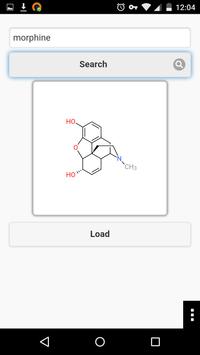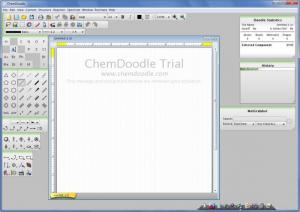
This will be very useful when you need to multiple pages side by side. One of the new features that will prove popular is the ability to display multipage layouts, each page clearly defined, they can be displayed as a single column or as a multi-column trellis. If you copy and paste a structure containing a collapsed label then it can be still expanded, however you can not simply alter an atom label and then use “Expand Labels” to introduce a user defined fragment.
#Chemdoodle 3d full#
If you are drawing a series of structures that contain a large invariant sub-structure it is often useful to be able to collapse the fragment down to a simple label as shown below using the “Collapse to Label” option, the full structural display is generated using the “Expand Labels” option. Whilst ChemDoodle is primarily a chemical drawing tool, there is now an extensive collection of biological graphics that can be included in diagrams. I only tested SMILES and InChi but both worked perfectly, both of these formats are often used as a compact text based file format. In addition it is possible to paste a number of chemical formats directly from the clipboard. MDL RXNFiles, both V2000 and V3000 connection tables (.rxn) MDL MOLFiles, both V2000 and V3000 connection tables (.mol. ISIS Sketch Transportable Graphics File (.tgf)

#Chemdoodle 3d update#
Hopefully as Apple update their productivity tools this will be sorted out.ĬhemDoodle reads and writes 27 of the major chemical file types. It worked fine with Word, Powerpoint, Filemaker and Keynote, Pages proved troublesome and I had to resort to the old trick of pasting from Pages into Keynote and then copy pasting into ChemDoodle to retain chemical information.
#Chemdoodle 3d software#
It is great to hear about a scientific software company that is already looking at Yosemite, unlike some companies for whom OS updates seem to be a total surprise.ĬhemDoodle can paste scalable vector graphics into your favourite word processors, including Microsoft Office, Apple iWork and OpenOffice, I did some limited testing of round-trip editing. It certainly sounds like they have things covered for now and the future.

Yosemite does not support Java 7 from Oracle, but does support Java 8 and ChemDoodle 7 will work with Java 8 on Yosemite. So we still recommend and use Java 6 by default, but it is up to the user. There are a few issues with Java 7 from Oracle, such as problems supporting full screen mode (so it is disabled in ChemDoodle 7 when using Java 7) and some minor performance issues that should not affect users. Previously, we only supported Java 6 from Apple.
#Chemdoodle 3d mac#
I did ask the developers about Java support on the Mac since at times it can get problematic as we transition from an Apple supplied Java to one supplied by Oracle.ĬhemDoodle 7 supports Oracle Java on OS X. I’m not sure if this is due to improvements in Java or ChemDoodle or both, but it is really noticeable. One of things that is immediately apparent is that ChemDoodle loads much, much faster, indeed the whole application feels much more snappy. Widgets can be individually activated from the drop down menu accessed from the button at the top right. I really prefer this option since it allows you to focus on the content. The interface has been tided up and now offers a cleaner workspace, many of the options are now hidden in pop up pallets which appear when you select the button in the left-hand side bar.

It also has the advantage in that it supports Mac, Linux and Windows and offers access to ChemDoodle Web Components. ChemDoodle is now firmly established as one of the key chemical drawing packages that offers an inexpensive alternative to some of the increasingly expensive drawing packages.


 0 kommentar(er)
0 kommentar(er)
